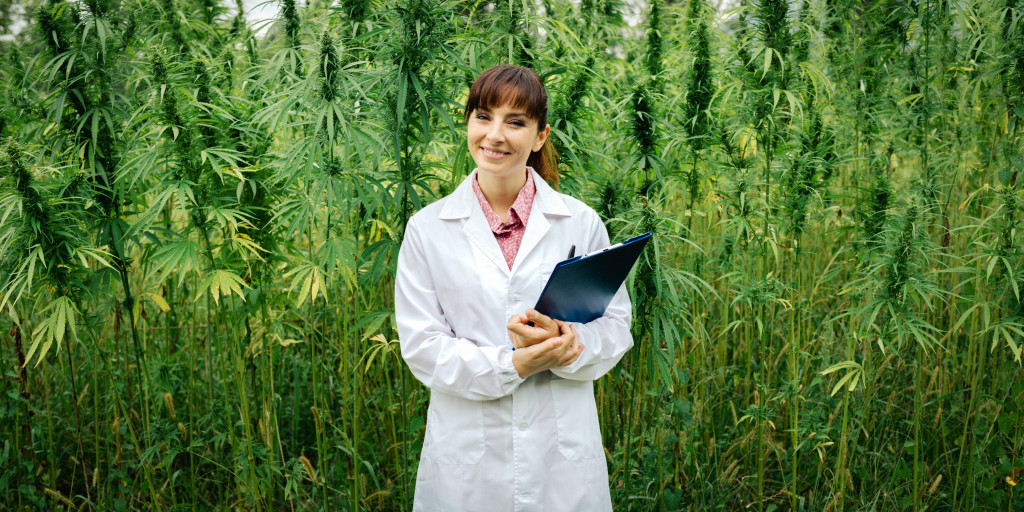Technology has made a big impression on our lives. Through the years, technology has made our lives more accessible and convenient. Much of farming work – from plant to harvest – has been easy for growers, even with the irregular climate changes that farmers endure globally. Yet, there are still some matters that farmers face when it comes to modern cultivation. The following are some advanced technologies that help modern farmers.
Modern Greenhouses
Agricultural production is a high-risk industry. Thus greenhouse farming gives better control and decreases risks due to poor climatic conditions. It improves plant growth and shelters crops from harsh weather phenomena. Furthermore, certain forms of greenhouse farming prolong the growing season of crops. Or even enable farmers to produce crops even outside the particular season. Greenhouses with extra features allow for complete control of growing crops. That results in quicker growth and increased harvest.
Indoor Vertical Farming
With globalization and urbanization, commercial subdivisions and buildings replaced many farmlands. They are giving farmers problems on where they will grow their crops. Indoor vertical farming is the solution. It allows you to grow crops on vertical stacked or inclined surfaces. Many even integrate it into structures or buildings in urban areas.
It results in producing crops with less space used. Some even do hydroponic mushroom farming or cultivation, where you use growing mediums or water to replace the soil in growing your plants. Using this agricultural technology can result in sustainable urban farming. Plus, it maximizes crop production with lower labor costs.

Automated Farming Machines
Farming machines are becoming automated as well. This technology increases agricultural efficiency by automating the crop or livestock production process. These technologies are new. But many traditional agriculture businesses are adopting farm automation into their operations. Time restrictions and workforce shortages are both addressed by automated agricultural machines. Samples of such are self-driven tractors or seeders. Furthermore, these machines, unlike human workers, can work 24/7.
Laser Scarecrows
Farmers have struggled to manage pest problems such as starlings, blackbirds, and crows. These pests have the potential to damage crops, resulting in a significant loss of income for farmers. They have always used scarecrows, which are hay bales fashioned and costumed as farmers. But this isn’t going to work. A University of Rhode Island researcher recently created a laser scarecrow. This tech shoots green laser light whenever they detect birds. They work because birds are sensitive to the color green. Plus, it has a range of up to 600 feet for pest control.
Harvest Quality Vision (HQV)
Croptracker pioneered this technology. HQV facilitates the selection of fruits and vegetables by removing human inspections. HQV analyzes and determines harvest quality and quantity using automated scanners. They use cameras in grading crops. Sorting and managing the crop now minimizes damages from human or machine handling. When it detects illnesses, flaws, or quantity deficits, the program generates warnings. It will allow producers to adjust their procedure early in the harvesting operation. HQV assists farmers in producing more consistent harvests of excellent quality. Thus it will help in increasing farm profitability.
Crop & Soil Monitoring & Management
You will be collecting and handling large amounts of data when precision farming. It is a time-consuming operation that is prone to human error. FarmBeats created a real-time technology by combining sensors, drones, satellites, and tractors. It sends the gathered data into a cloud-based system. It then analyzes and produces a comprehensive image of how the farm is operating.
Other technologies, such as Agrocares, assist farmers in monitoring and analyzing soil fertility. It will be able to see the soil’s nourishment, nutrition, foliage, and pest content. All these are possible efficiently and cost-effectively. The technology, like FarmBeats, makes use of cloud-based software. That will allow it to function in real-time.
Bee Vectoring
Bee vectoring is an exciting breakthrough in disease control management. A Canadian company discovered this tech. Moreover, they found the effectiveness of bee vectoring in disease management and pest control. It also improves plant development and extends crop storage life. The method uses an existing fungus known as BVT-CR7 or Vectorite.
These fungi aid in the protection of crops against a range of illnesses. They placed the Vectorite solution in the beehive. Bees then carry the Vectorite and spread the solution to the nearby crops and fields. A perfect example of tech and the environment working together to our benefit.
Many fear that technology will completely replace human resources in business. But you can never deny how beneficial this tech is. Nowadays, you seek productivity increases in our businesses. Farmers may now have a more excellent hold over crop quality control and pest management. They even optimize their current strategies to increase profitability thanks to technological advancements. Farmers do not leave it with luck since they have a better understanding of their crops.

